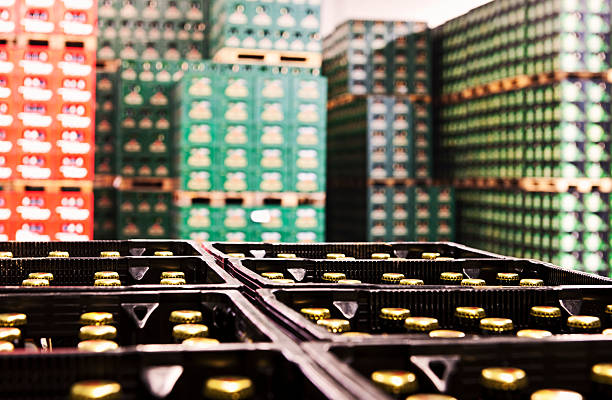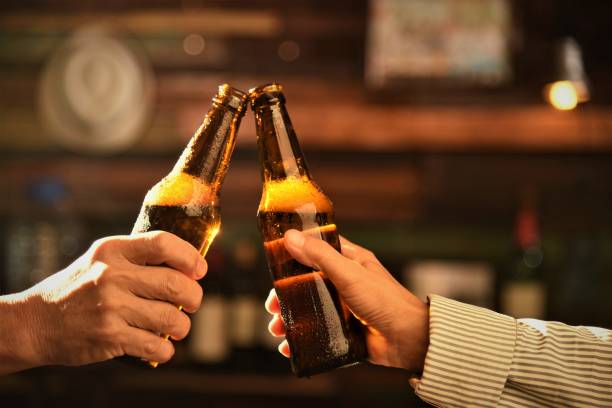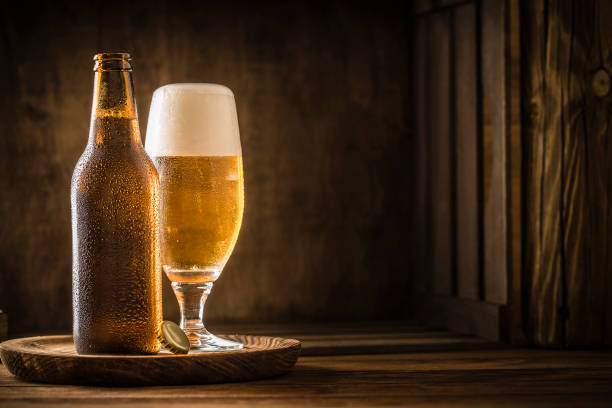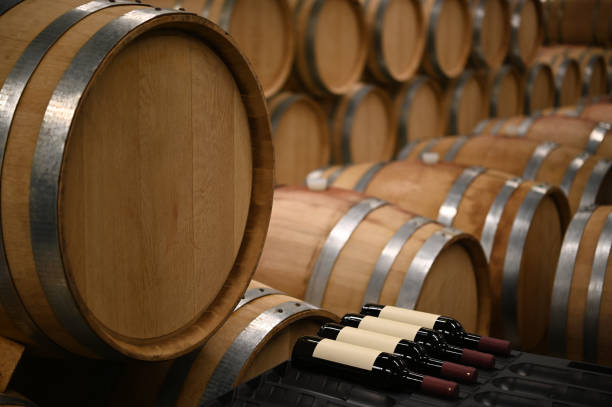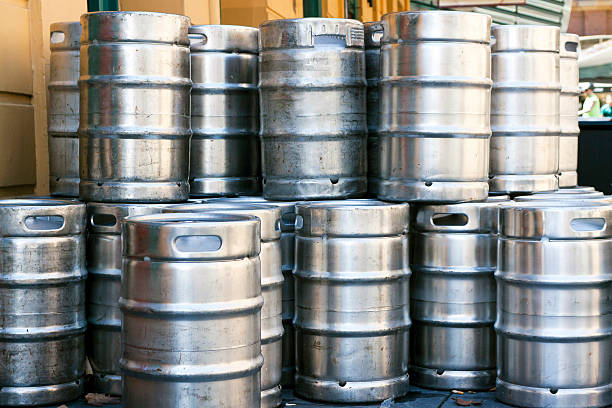When exploring the world of beer, one of the fundamental questions that arises is: “how many beers in a keg?” This question is particularly relevant for event planners, bar owners, and beer enthusiasts who want to understand beer volume, planning for parties, or simply satisfying curiosity about beer distribution and consumption. A keg is a small barrel traditionally used for transporting and storing beer. The answer to how many beers can be found in a keg depends on the size of the keg and the serving size of the beer. Kegs come in various sizes, ranging from the smaller “mini” keg to the larger “full-size” or “standard” keg, each designed to hold a specific volume of beer. This introduction will delve into the different keg sizes, their capacities in terms of beer servings, and how these factors play a crucial role in event planning, budgeting, and the overall enjoyment of beer.
What is Keg Beer?
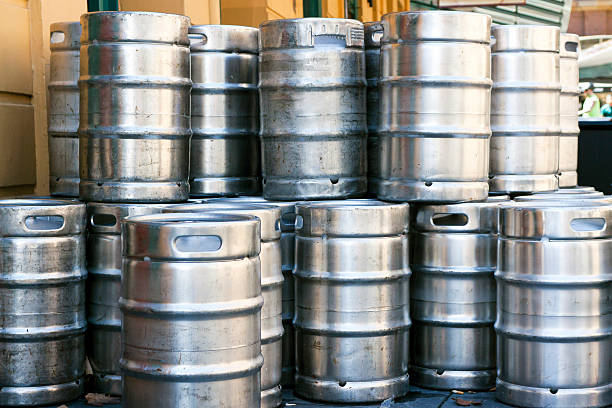
What is Keg Beer?
Keg beer is beer served from kegs, which are cold conditioning and pressurized tanks with a single opening called the bung. Unlike cask ale, keg beer is pressurized with gas, such as carbon dioxide, to push the drink out through a gas pump, ensuring consistent quality and longer shelf life. Keg beer is commonly used for lagers, stouts, pale ales, and session ales, and it is typically served cold, between three and eight degrees Celsius. The beer is pumped into draught taps at the bar, making it also known as ‘on draught.’ Staff are alerted when the keg is nearly empty, and it does not require the same conditioning time as cask ale.
What Types Of Keg Beer Are There?
There are several types of keg beer available, each with its own characteristics and uses. The main types of kegs include:
- Cornelius Keg (Corny Keg, Homebrew Keg, Soda Keg):
- Holds approximately 40 pints or 53 cans/bottles (12oz).
- Capacity: 5 gallons / 18 liters.
- Dimensions: 23″ x 9″.
- Popular among homebrewers due to its easy maintenance and convenience.
- Sixth Barrel Keg (Sixtel, 1/6 Barrel, 1/6 BBL):
- Holds around 124 pints or 165 cans/bottles (12oz).
- Capacity: 15.5 gallons / 58.7 liters.
- Dimensions: 23⅜” x 16⅛”.
- Commonly used by craft brewers for small-batch experiments.
- 50 Litre Keg (Import Keg, European Barrel, 50 Liter):
- Contains about 105 pints or 140 cans/bottles (12oz).
- Capacity: 13.2 gallons / 50 liters.
- Dimensions: 20.94″ x 16.06″.
- Popular in European countries and used by brands like Heineken and Stella Artois.
- Mini Keg:
- Holds approximately 14 12-ounce pours (5 liters).
- Often used for small gatherings and easy to find versions like Heineken mini kegs.
- Comes with a CO2 canister for beer dispensing.
These keg types cater to different needs and preferences, offering options for homebrewers, craft beer enthusiasts, and those looking for smaller quantities for intimate gatherings.
Breakdown of Keg Sizes and Beer Capacity
The Sixth Barrel Keg
Also called a “Sixtel”, this slim keg contains around 58 twelve ounce beers or 49 sixteen ounce pint beers. Its small size makes it highly portable. Many commercial breweries use disposable Sixth Barrel kegs.
- Capacity: 5.16 gallons or 19.5 liters
- Beers: 58 twelve ounce cans or 49 sixteen ounce pints
The Quarter Barrel Keg
This short and stout keg holds about 82 twelve ounce beers or 66 sixteen ounce pints. The Quarter Barrel is a popular choice for tailgating and smaller gatherings. Many find it easy to transport and store.
- Nicknames: Pony Keg
- Capacity: 7.75 gallons or 29.3 liters
- Beers: 82 twelve ounce cans or 66 sixteen ounce pints
The Half Barrel Keg
Also known as a full keg, this contains around 165 twelve ounce beers, or 124 sixteen ounce pints. Its large size makes it ideal for events with many guests, such as large parties or weddings.
- Nicknames: Full Keg
- Capacity: 15.5 gallons or 58.6 liters
- Beers: 165 twelve ounce cans or 124 sixteen ounce pints
The Cornelius Keg
Sometimes called a Corney Keg, it holds around 82 twelve ounce beers or 66 sixteen ounce pints. Cornelius Kegs are popular among homebrewers for storing and serving homemade beer. Their stainless steel construction makes them reusable and easy to clean.
- Nicknames: Corney Keg
- Capacity: 7.75 gallons or 29.3 liters
- Beers: 82 twelve ounce cans or 66 sixteen ounce pints
The Sanke Keg
Sanke kegs come in several sizes, most commonly Sixth Barrel and Half Barrel. They use a valve mechanism making them ideal for bars and restaurants. Half Barrel Sanke kegs hold around 165 twelve ounce beers.
- Capacity: Varies, often Sixth Barrel or Half Barrel
- Beers: Varies, around 82 twelve ounce beers for Sixth Barrel
The European DIN Keg
Popular in Europe, DIN kegs come in 30L and 50L sizes. The 50L has a similar capacity to an American Half Barrel. DIN kegs are refillable and non-disposable.
- Capacity: 30L or 50L
- Beers: 99 twelve ounce cans (50L)
The Mini Keg
As the name suggests, these small kegs are meant for individual use. Mini kegs contain around 9.2 liters, or 84 twelve ounce beers. Their tiny size is great for small parties or personal use.
- Capacity: 9.2 liters
- Beers: 84 twelve ounce cans.
Choosing the Right Keg Size
Selecting the ideal keg size depends on several factors:
- Number of Guests: Estimate your guests’ beer consumption to ensure you have enough. Allow for 7-8 twelve ounce beers per person. Larger parties may require multiple kegs.
- Event Duration: The longer your event, the more beer needed. Opt for a larger keg for all-day or multi-day occasions.
- Beer Type: Some beers like stouts produce more foam, reducing available beer per pour. Select a larger keg for foamy varieties.
- Storage and Transportation: Consider how much space you have to store and transport the keg. Larger kegs can be difficult to maneuver.
Factors Affecting Number of Beers Dispensed
While keg sizes provide an estimate of beer quantity, other factors affect the actual number of beers dispensed:
- Foam: Due to foaming while pouring, around 10-20% of a keg is foam rather than beer. This reduces the amount dispensed.
- Pour Size: Guests may pour different amounts, affecting the number of total pours possible from a keg.
- Waste: Some beer is lost when purging oxygen from kegs before filling. Leaks and improper dispensing can also waste beer.
Preserving Keg Beer
Preserving keg beer involves several key steps to maintain its taste and quality. Firstly, it’s essential to store the keg in a chilled environment, ideally between 0-6 degrees Celsius, to prevent the beer from spoiling. Additionally, maintaining the keg at a proper pressure level, typically between 10-12 psi, is crucial for preserving the beer. When it comes to serving keg beer, using the right tap is important to avoid introducing excess air that can lead to oxidation and affect the taste of the beer. Lastly, storing kegs in dark places like basements, refrigerators, or closets helps prevent light exposure, which can damage the beer’s quality.
Additional Talking Points

Additional Talking Points
- Kegs are typically constructed from stainless steel, with some plastic versions.
- Reusable kegs have less environmental impact than disposable ones.
- Proper keg cleaning and maintenance improves beer quality and reduces waste.
Conclusion: How many beers in a keg
Keg sizes provide estimates, but foam, pour sizes, and waste impact the actual number of beers dispensed. Consider these factors when planning your next keg party! The right keg size depends on guest numbers, event duration, beer types, and more. With an array of keg sizes available, you can find the perfect fit for any occasion.

